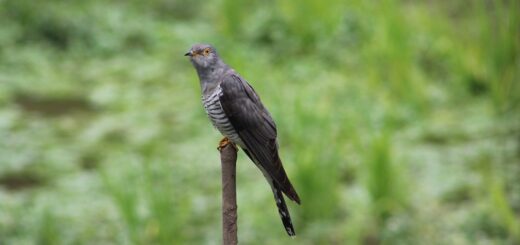Montagu’s Harrier
Montagu’s Harrier: An Overview of the Species
Montagu’s Harrier, scientifically known as Circus pygargus, is a bird of prey belonging to the harrier family. This species is named after the British naturalist George Montagu, who was the first to describe it in 1816. Montagu’s Harrier is widely distributed across Europe, Asia, and Africa, and it is known for its graceful flight and distinctive hunting behavior. In this article, we will explore the characteristics, habitat, behavior, and conservation status of Montagu’s Harrier, shedding light on this fascinating raptor.
Physical Characteristics
Montagu’s Harrier is a medium-sized raptor with a wingspan of 100-120 cm and a body length of 40-48 cm. The males are easily recognizable by their striking plumage, which features a predominantly blue-grey upper body, black wingtips, and a white underside with black streaks. On the other hand, the females and juveniles have a brownish coloration with streaked patterns on their bodies. The eyes of Montagu’s Harrier are large and yellow, providing excellent vision for hunting.
One of the most distinctive features of Montagu’s Harrier is its long wings and tail, which enable it to soar and maneuver effortlessly in the air. This species is well-adapted for long-distance migration, and its sleek, aerodynamic body allows it to cover great distances during its seasonal movements. Overall, Montagu’s Harrier possesses a streamlined and elegant appearance, making it a captivating sight for birdwatchers and nature enthusiasts.
Habitat and Distribution
Montagu’s Harrier inhabits a wide range of open habitats, including grasslands, marshes, meadows, and agricultural fields. This species is commonly found in lowland areas, where it can forage for its prey and build nests in the vegetation. Montagu’s Harrier is known for its preference for areas with tall grass and low shrubs, which provide suitable cover for hunting and breeding activities.
In terms of distribution, Montagu’s Harrier has a vast range that encompasses Europe, Asia, and Africa. During the breeding season, this species can be found in various countries, including Spain, France, Germany, Russia, Kazakhstan, and Mongolia. In the winter months, Montagu’s Harrier migrates to sub-Saharan Africa, where it spends the non-breeding period in search of suitable feeding grounds.
Behavior and Diet
Montagu’s Harrier is a highly skilled hunter, specializing in catching small mammals, birds, and insects. This species is known for its distinctive hunting technique, which involves flying low over the ground and surprising its prey with swift and agile movements. Montagu’s Harrier is also capable of hovering in the air, allowing it to scan the ground for potential food sources and pounce on unsuspecting prey.
During the breeding season, Montagu’s Harrier forms monogamous pairs, and the male engages in elaborate aerial displays to attract a mate. The female builds the nest on the ground, hidden in dense vegetation, and lays a clutch of 3-5 eggs. Both parents take turns incubating the eggs and caring for the young, demonstrating a high level of parental investment in the reproductive process.
Conservation Status
Despite its widespread distribution, Montagu’s Harrier faces several conservation challenges that threaten its long-term survival. Habitat loss and degradation due to agricultural intensification pose a significant threat to this species, as it relies on open landscapes for foraging and breeding. Additionally, illegal hunting and trapping of raptors in certain regions contribute to population declines for Montagu’s Harrier.
To address these concerns, conservation efforts are underway to protect key habitats for Montagu’s Harrier and raise awareness about the importance of preserving open landscapes for wildlife. Monitoring and research programs are essential for gaining a better understanding of the population trends and ecological requirements of this species, enabling targeted conservation actions to be implemented effectively.
Conclusion
Montagu’s Harrier is a captivating bird of prey with its graceful flight, striking plumage, and remarkable hunting behavior. As a species that spans across multiple continents, Montagu’s Harrier plays a crucial ecological role in maintaining the balance of its respective ecosystems. By learning more about the characteristics, habitat, behavior, and conservation status of Montagu’s Harrier, we can appreciate the significance of protecting this magnificent raptor and ensuring its continued presence in the natural world.
